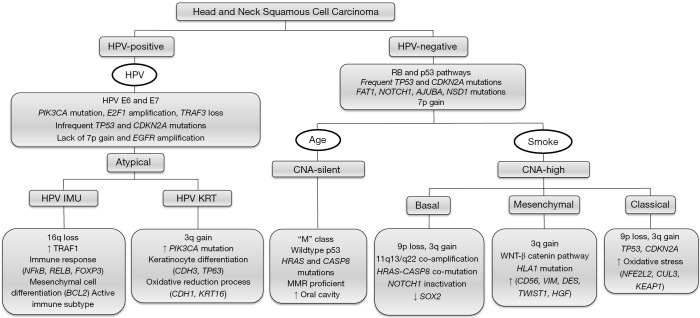Figure 1.
Composite schematic depicting the molecular landscape of head and neck squamous cell carcinoma. Tumours are grouped according to CNA alterations, gene mutations and gene expression profiles summarized from various studies described in this review. Only the most pertinent and discriminatory chromosomal, gene and immune profiles are highlighted. Based on mutational analyses, HNSCC are characterized as HPV-positive, HPV-negative CNA-silent, and HPV-negative CNA-high tumours. Furthermore, gene expression profiling segregates these tumours into atypical, basal, classical and mesenchymal, with clear differences observed between tumours of different anatomical sites and proposed etiology. Additional immune profiling further classifies tumours as either immune-active or immune-exhausted. The clinical utility and impact of these molecular tumour subtypes remains to be determined.

